How are we harnessing digitisation to optimise our energy system? The third session of Singapore Energy Summit on 25 October explored the key drivers for innovation across the energy sector and how they are facilitating the low carbon energy transition. Choon Kiat reports
.jpg?sfvrsn=3bf71479_2)
Kicking off Session 3 of the Singapore Energy Summit, H.E. Damilola Ogunbiyi, Chief Executive Officer and Special Representative of the UN Secretary-General, Co-Chair of UN-Energy, Sustainable Energy for All, shared in her keynote address the need to accelerate adoption of low carbon initiatives to achieve the global net-zero carbon emissions goal by 2050. She said that there is added impetus for nascent low carbon technologies to be rapidly scaled up for commercial use in the shortest time.
17ca7866cb3d6c60bd32ff0000579d7f.png?sfvrsn=23f71479_2)
In his keynote address, The Hon. Angus Taylor MP, Minister for Energy and Emissions Reduction, Australia, shared how a technology-driven approach remains key to enabling the energy transition while ensuring economic growth in the nation. He further outlined Australia's roadmap for decarbonisation, underpinned by innovative, low-emission technologies.
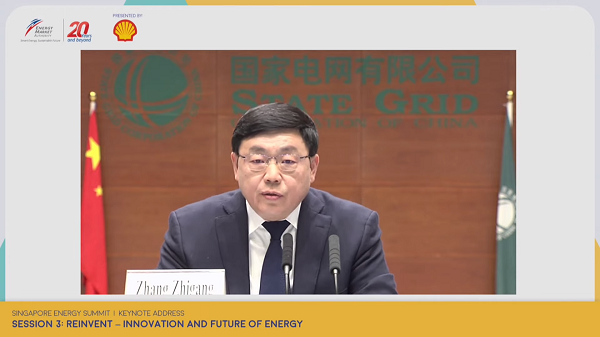
Echoing these views, Zhang Zhigang, President and Member of the Board at the State Grid Corporation of China, discussed how digital adoption has helped propel more sustainable ways of producing, transporting and consuming energy in China. He suggested that digitalisation would be a key driver for new business opportunities in the energy markets.
Tech-enabled transformation in the energy sector
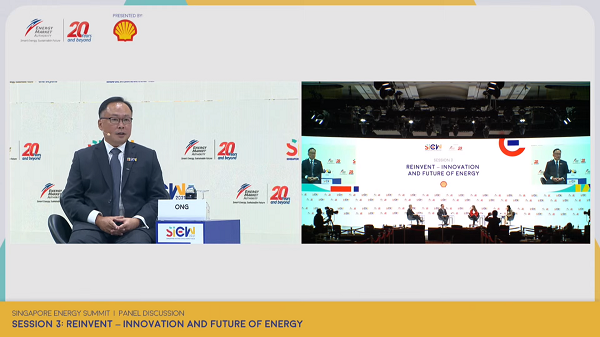
In the panel discussion, Chris Ong, CEO of Keppel Offshore & Marine, shared the company’s plans to optimise energy efficiency in the marine business. He highlighted how shipyard operations can drive the adoption of low carbon innovations with the installation of solar panels and energy storage systems.
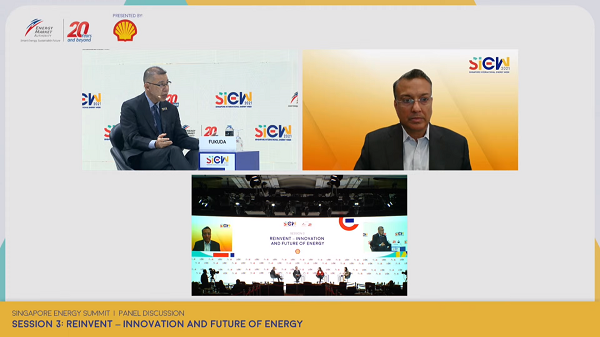
Sumant Sinha, Founder, Chairman and CEO of ReNew Power, pointed out that new advances in digital technology, energy storage systems and green hydrogen developments are key innovations that will drive the shift to clean energy in Asia.
On the commercial potential of low carbon solutions such as hydrogen and carbon capture, Senoko Power Chairman Akihiro Fukuda highlighted economic feasibility and the length of investment recovery as two major investment considerations for new technologies.
Discussing the topic of how new business models and financing frameworks can drive adoption of low carbon technologies, Tan Su Shan, Managing Director and Group Head of Institutional Banking of DBS, said that the current energy market dynamics have created an interesting confluence of supply and demand factors for financial innovation— and explained how the markets can incentivise sustainability efforts.
The panellists concurred on the critical role of regulatory frameworks and new enabling policies to foster the deployment of innovative and sustainable technologies.
Driving sustainability through the circular economy
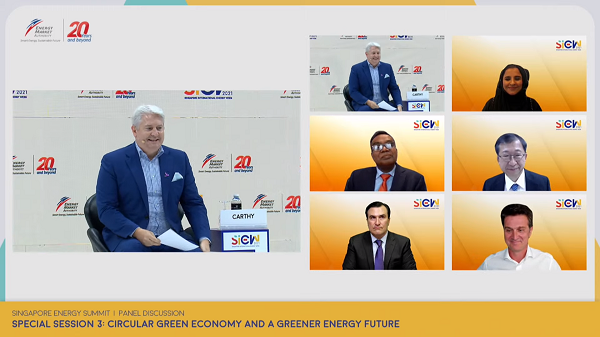
In a Special Session, expert speakers discussed how the public and private sectors can collectively drive the circular economy forward.
Dr Shamma Al Malek, Strategic Affairs Executive Director at the Abu Dhabi Department of Energy, stressed the need for greater focus to drive green growth through targeted interventions, especially in key areas that require collaboration and coordination across agencies and companies.
Professor Tatsuya Terazawa, Chairman and CEO of The Institute of Energy Economics, Japan (IEEJ), outlined pragmatic steps to achieve carbon neutrality: coupling conventional power generation with solar power plants, and switching to low carbon fuels such as ammonia.
Joseph McMonigle, Secretary General of the International Energy Forum (IEF), touched on the need to maintain public support for climate progress. "We need to keep making progress on climate action, while at the same time ensuring we have the energy supply today to power the global economy," he stated.
Dr D.J. Pandian, Vice President, Investment Operations (Region 1), Asian Infrastructure Investment Bank (AIIB), shared his views that natural gas will remain an important transition fuel and must be used in conjunction with intermittent renewable energy sources in the future energy landscape.
Philippe Delorme, Executive Vice-President of Energy Management, Schneider Electric, discussed how regulatory bodies and businesses can continue their path in the circular green economy, despite challenges posed by the current energy supply crunch.
The Singapore Energy Summit came to a close with two keynote addresses:
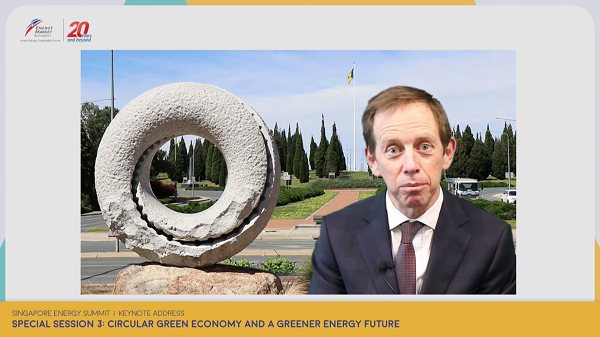
Shane Rattenbury, Attorney-General; Minister for Consumer Affairs; Minister for Water, Energy and Emissions Reduction; Minister for Gaming, Australian Capital Territory, noted that “zero emissions, the circular economy and sustainability are all big ideas with underlying complexities”. Achieving these goals would require a commitment to science, honest engagement with the community, and a "willingness to challenge ourselves and others".
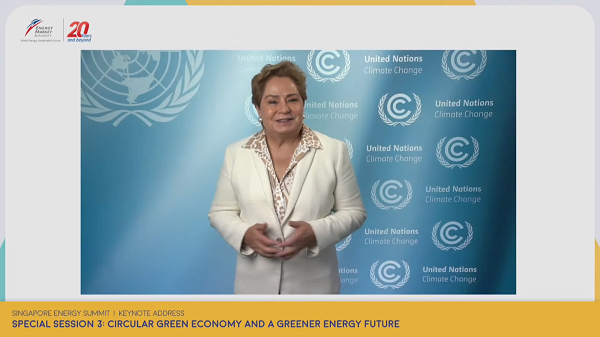
H.E. Patricia Espinosa, Executive Secretary of the United Nations Framework Convention on Climate Change (UNFCCC), noted that 75% of global emissions are caused by our need for energy. She highlighted that nations and businesses must commit to a deep and lasting transformation of how energy is produced, used and distributed, in order to collectively achieve the goals of the Paris Agreement.
Stay tuned on this Live Blog or follow us on Twitter (@SIEW_sg) for updates on the day’s discussion.